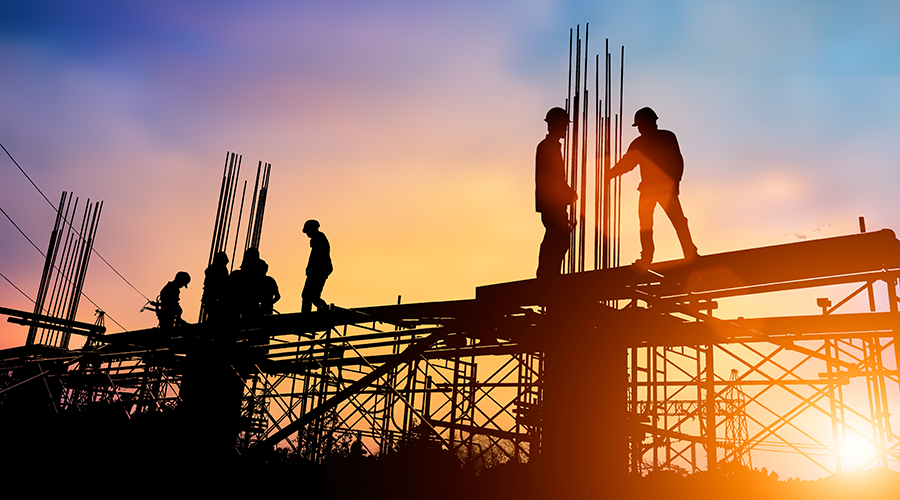Healthcare construction has bounced back from the worst days of the COVID-19 pandemic, but fresh challenges are emerging for project teams as they plan, design and manage new developments and renovations.
While rising interest rates have slowed construction in some sectors, healthcare projects continue with urgency as the built environment evolves to meet changing patient and provider needs. Decentralized services, patient-centered care and sustainable design are on the rise, converging with above-average costs for materials and labor, and supply chain issues that still plague many specialty products.
With so much in flux in the healthcare industry and longer project timelines for many developments, intentional planning and sound procurement strategies are essential. Construction teams and healthcare facility managers must align with all healthcare stakeholders to make timely, informed decisions, ensuring projects are well-conceptualized and delivered with minimal delay or disruption.
Tight timelines and budgets
Construction costs across all commercial sectors have dipped from 2022’s unprecedented highs, becoming more closely aligned to average historical growth rates, according to JLL’s 2023 U.S. and Canada Construction Outlook. Materials prices in the United States, particularly for steel and lumber, began to fall in the second half of 2022, and labor wage growth was just above inflation at 6.5 percent over the same period.
But the supply chain has not fully recovered. Some of the most commonly required healthcare materials and products — including mechanical, electrical and plumbing (MEP) systems that can account for an estimated one-third to one-half of healthcare construction costs — are experiencing long lead times.
Electrical switchgear and emergency generators are among the leading concerns on healthcare projects, with procurement timelines stretching to more than a year. Customized MEP equipment that meets exact specifications for critical functions such as life support and infection control is another concern. With limited off-the-shelf solutions, analyzing and planning for early procurement of these essential systems is essential in keeping projects moving forward on time and within budget.
Healthcare developments are also particularly susceptible to the labor shortage, particularly among skilled trades such as project management and engineering. The development industry has responded by improving wages and project predictability, but an estimated shortfall of 320,000 employees remains in commercial construction nationwide. Heavy and civil engineering face even more acute labor shortages, with rising demand for labor due to increased infrastructure spending.
All of these trends point to higher project costs, despite an overall economic slowdown.
Innovation and the built environment
COVID-19 accelerated healthcare design and development trends that had been emerging over the past decade. Patients want their medical care removed from the hospital and brought closer to home via telemedicine solutions and outpatient clinics. Healthcare systems have responded with facilities that offer a range of services and specialization, from baseline exam rooms and telemedicine-ready spaces to state-of-the-art imaging centers, labs and operating rooms.
The expense of new technology — from MRIs and CT scanners to medicinal linear accelerators and robot-assisted surgical suites — and the specialty build-outs that support them can mean a near-100 percent premium on space, according to JLL’s 2022 Outpatient Fit-Out Guide. It is not just the cost of the technology itself but the specialized structural design that supports a machine’s weight and electrical pull.
But these detailed specifications typically require a downpayment to the equipment manufacturer, with procurement times measured in years. New technology is also constantly coming online, meaning the project team must decide whether to move forward with the original purchase or revisit infrastructure requirements and space needs to incorporate tomorrow’s technology into today’s space.
While the overall goal is to decrease time spent in a healthcare setting for many patients, patient-centered design is also a continued trend, with the purpose of creating more accessible, equitable and inclusive facilities that promote healing and improve the patient experience. Improved air filtration, abundant natural light and nature-rich features such as green walls have been linked to better health outcomes and can reduce a building’s carbon emissions, medical waste and water use.
Fortunately, these design tweaks do not carry high price tags. The higher upfront cost of sustainable design features often can be recouped via greater operating efficiency, as well as more satisfied patients and overall growth.
Looking to the future
While material costs are returning to historically average increases, labor costs and a lack of overall talent in the construction industry will continue to challenge healthcare development. More sophisticated design and project delivery methods will require unique materials and technical skills to make projects a reality.
Despite economic pressures, the healthcare construction sector is reliably strong and shows no real signs of slowing. To navigate the still-choppy waters and keep timelines and budgets in check, project teams need to align early and make informed decisions about project variables. Failing to get input, second-guessing decisions or delaying decisions until something better comes along are all sure-fire ways to let projects linger and at a greater cost and complication than before.
Dan Squiers is senior vice president for healthcare, project and development services with JLL.

 UF Health Hospitals Rely on Green Globes to Realize Their Full Potential
UF Health Hospitals Rely on Green Globes to Realize Their Full Potential How Healthcare Facilities Can Be Truly Disaster-Resilient
How Healthcare Facilities Can Be Truly Disaster-Resilient TriasMD Breaks Ground on DISC Surgery Center for San Fernando Valley
TriasMD Breaks Ground on DISC Surgery Center for San Fernando Valley Bigfork Valley Hospital Falls Victim to Data Breach
Bigfork Valley Hospital Falls Victim to Data Breach AI-Driven Facilities: Strategic Planning and Cost Management
AI-Driven Facilities: Strategic Planning and Cost Management